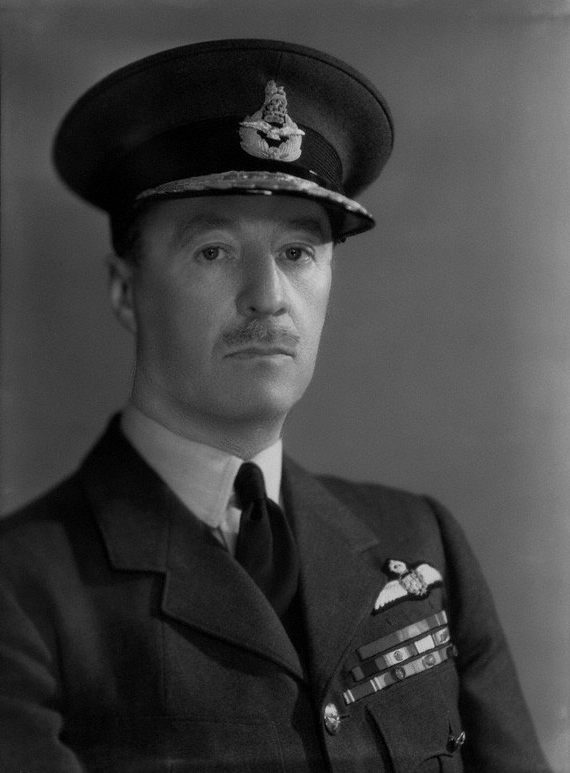half-plate film negative, 2 June 1939
NPG x156362
© National Portrait Gallery, London (
Air of Authority - A History of RAF Organisation
Marshal of the RAF The Lord Newall of Clifton upon Dunsmoor
 Cyril
Louis Norton
Cyril
Louis Norton
b:
15 Feb 1886
r: 24 Oct 1940
d: 30 Nov 1963
(Army):
- 2 Lt: 16
Aug 1905, Lt (Army): 16 Nov 1907,
(RAF):
- (T) Brig-Gen [Lt Col]:
1 Apr 1918, Act Brig-Gen:
xx xxx 1919 - 30 Apr 1919, Wg Cdr: 1 Aug 1919 [1 Apr 1918], Gp
Capt: 8 Aug 1919, A/Cdre: 1 Jan
1925, AVM: 1 Jan 1930, AM: 1 Jul 1935, ACM: 1
Apr 1937, MRAF: 4 Oct 1940.
© National Portrait Gallery, London (
xx
xxx xxxx:
Attended RMC Sandhurst
16
Aug 1905:
Officer, Royal Warwickshire Regiment. (Zakkha Khel Expedition - 1908)
16
Sep 1909:
Officer, 2nd
Battalion, 2nd Gurkha Rifles, Indian Army.
xx
May 1913:
'Wings' Course, Central Flying School.
17
Nov 1913:
Initial Staff for Indian Training School attached to CFS.
12 Sep 1914: Flight Commander, No 1 Sqn RFC. (Various types – Western Front)
10 Oct 1914: Embarked for England
13 Oct 1914: Arrived in England
24
Mar 1915:
Officer Commanding, No 12 Sqn RFC. (Avro 504, BE2c – Netheravon/Western
Front)
5 Sep 1915: Re-embarked for France
1
Feb 1916:
Appointed Wing Commander
3 Feb 1916: Returned to Home Establishment
3
Feb 1916:
Officer Commanding, 6th Wing RFC.
24
Dec 1916:
Officer Commanding, 9th Wing RFC.
20-22 Jan 1917: Temporary duty in England
11
Oct 1917:
Officer Commanding, 41st Wing RFC.
28 Dec 1917: Brigadier-General Commanding, VIII Brigade RFC. (arrived 22 Jan 1918)
15
Jun 1918:
Deputy Commander, Independent Bombing Force.
17
Mar 1919:
Brigadier-General (Administration), HQ South Eastern Area.
1 Aug 1919: Awarded Permanent Commission as a Lieutenant Colonel
1 Aug 1919: Appointed Deputy Director, 2nd Class
1
Aug 1919:
Deputy Director of Personnel.
24
Aug 1922:
Deputy Commandant, No 1 School of Technical Training (Boys).
30 Jun 1923: Appointed Air ADC to The King.
14
May 1925: AOC, Special Reserve and Auxiliary Air Force.
1
Dec 1925:
Member, League of Nations Disarmament Committee.
12
Apr 1926:
Director of Operations and Intelligence/Deputy Chief of the Air Staff.
1 Jan 1930: Appointed as an Additional Member of the Air Council.
6 Feb 1931: Relinquishes his appointment as an Additional Member of the Air Council.
6
Feb 1931:
AOC, Wessex Bombing Area.
26
Sep 1931:
AOC, RAF Middle East.
14
Jan 1935:
Air Member for Supply and Organisation.
1
Sep 1937:
Chief of the Air Staff.
Born at Mussoorie in India, he entered Sandhurst after leaving Bedford School. Learning to fly in 1911 (RAeC Certificate No 144 on 3 October) he was selected to set up a military flying school in India., but still being in Britain on the outbreak of WW1, he was absorbed into the RFC. In 1916 a fire in No 12 Sqn's bomb store threatened the airfield but timely action by Newall himself prevented serious damage and injury, an act of conspicuous gallantry for which he was awarded the Albert Medal. The beginnings of a strategic bomber force were made in late 1917 with the formation of the 41st Wing tasked with attacks behind the German lines. By early 1918, this force had been upgraded to Brigade status (VIII) but when further upgraded to become the Independent Force he was superseded by Trenchard who had recently resigned as CAS.
On 28 January 1936 he was one of three officers representing the Air Council at the funeral of HM King George V. As CAS, he was responsible for requesting Dowding to delay his retirement at the critical point of the start of the Battle of Britain and was also responsible for persuading the Cabinet not to accede to a request from Churchill, then in Paris, for a further six squadrons to be sent to France. Instead he got agreement for the squadrons to be operated from bases in Britain over France. Unfortunately, he was not considered to possess the strength of personality needed to lead the RAF any further into World War Two and was replaced as CAS by Sir Charles Portal in late 1940. For the remainder of the war and into 1946 he fulfilled the duties of Governor-General and Commander-in-Chief of New Zealand, proving to be an ideal choice as New Zealand came under threat from the Japanese. As a Marshal of the RAF he attended the funeral of King George VI.
Citation for the award of the Albert Medal (1st Class): -
"Major Cyril Louis Norton Newall,2nd Gurkha Rifles (attached to the Royal Flying Corps).
Albert Medal of the Second Class.
Corporal Henry Hearne, Royal Flying Corps.
1st Class Air Mechanic Harrie Stephen Harwood, Royal Flying Corps.
2nd Class Air Mechanic Alfred Edward Simms, Royal Flying Corps.
On the 3rd January,1916,at about 3 p.m., a fire broke out inside, a large bomb store belonging to the Royal Flying Corps, which contained nearly 2,000 high explosive bombs, some of which had very large charges, and a number of incendiary bombs which were burning freely. Major Newall at once took all necessary precautions, and then, assisted by Air Mechanic Simms, poured water into the shed through a hole made by the flames. He sent for the key of the store, and with Corporal Hearne, Harwood and Simms entered the building and succeeded in putting out the flames. The wooden cases containing the bombs were burnt, and some of them were charred to a cinder."
(London Gazette - 19 May 1916)
This page was last updated on 16/03/25©
![]() C R G Neville
C R G Neville
![]()